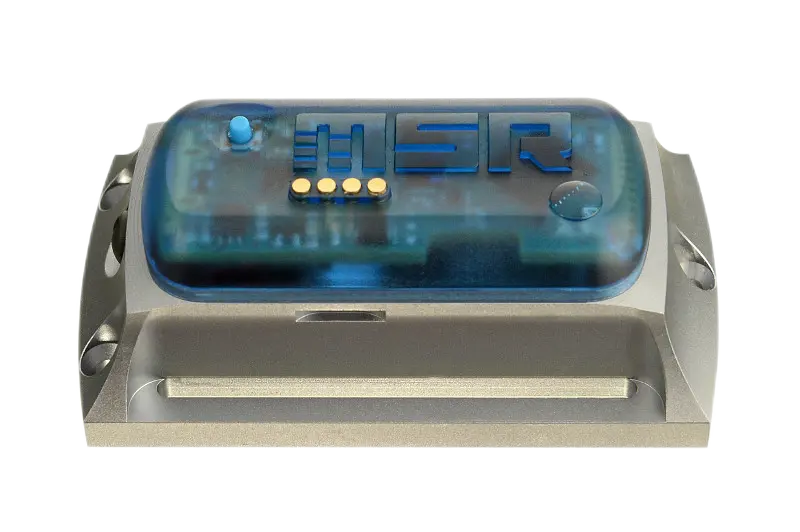
Boosting production inspection with Picanet technology in conjunction with CAN XL AR智能眼鏡 technology
The expanding nuance of up-to-date mechanized systems architectures entails robust monitoring and diagnostic utilities. Adopting Picanet, a advanced communication protocol developed distinctly for manufacturing conditions, joined with the enhanced capabilities of CAN XL, offers a effective solution for live equipment surveillance. CAN XL's increased bandwidth and scope grant seamless integration with Picanet networks, delivering efficient distribution of crucial operational data. This article explores the pros of employing Picanet control with CAN XL in industrial automation applications, underlining its impact on system reliability.
- Additionally, this method enables precognitive maintenance by granting valuable discernment into system health and foreseeable issues preceding they increase.
- The modifiability of Picanet, combined with CAN XL's extended capabilities, renders it an excellent solution for a expansive spectrum of manufacturing automation use cases.
Connecting Vuzix Smart Glasses for Remote Watch
Vuzix smart glasses are progressively growing a multi-functional resource in the discipline of remote surveillance. These groundbreaking devices grant staff to view real-time video from assorted locations, presenting a hands-free and engaging outlook. With their featherweight design and accessible control, Vuzix smart glasses support swift remote monitoring operations.
- In addition, Vuzix smart glasses can be merged with existing surveillance systems, permitting for a fluid workflow.
- Such connectivity strengthens situational awareness by furnishing attendants with a thorough understanding of the surveyed environment.
The all-round capability of Vuzix smart glasses prepares them for a expansive grouping of purposes, including protective surveys, operation reviews, and emergency response. As progress continues to flourish, we can anticipate even advanced uses for Vuzix smart glasses in the segment of remote surveillance.
Construction and Execution of CAN-Based Relay Systems
This report delves into the model and realization of a solid CAN-based relay control system. Applying the qualities of the Controller Area Network (CAN), this system allows instantaneous communication between a central controller and remote relay modules. The structure incorporates sophisticated techniques to ensure rigorous control of the relays, maximizing system performance. As well, this configuration showcases the pros of CAN technology in engineering applications, where fault-tolerant control is paramount.
- This system features a central controller, relay modules, and a CAN bus.
- CAN offers a networked communication channel for the regulator to monitor relay states.
- One software framework is built to manage message passing between the controller and relay modules.
Deployment of this system necessitates hardware design, software development, and framework integration. In-depth testing is performed to confirm the functionality and consistency of the system under various operating circumstances.
Monitoring Relay Status in Real Time using PCAN Interfaces
Adopting PCAN interfaces supplies a resilient solution for real-time monitoring of relay status within factory monitoring and control systems. These expedited communication interfaces grant seamless data transfer between PLCs, microcontrollers, and host computers, enabling constant observation of relay activation states. The ability to observe relay behavior in real time delivers invaluable insights into system performance, supporting timely response to potential issues or malfunctions.
- PCAN interfaces grant a solid platform for real-time data acquisition from relays.
- Real-time monitoring of relay status enables efficient troubleshooting and maintenance.
- What's more, PCAN interfaces permit high data transfer rates, securing accurate and timely relay status updates.
Upgraded CAN Bus Data Display Utilizing Vuzix XR
Unleashing the potential of real-time automotive diagnostics and analysis has become increasingly crucial in today's connected world. Vuzix XR smart glasses provide an innovative platform for visualizing elaborate CAN bus data, delivering engineers and technicians a hands-free, immersive visualization into vehicle systems. Through advanced displaying techniques, critical parameters such as speed, temperature, and fuel levels are presented in a clear and focused manner, overlaid onto the user's visual field. This groundbreaking technique allows technicians to instantly identify anomalies, diagnose issues precisely, and ultimately streamline maintenance procedures.
- The combination of Vuzix XR's augmented reality capabilities with comprehensive CAN bus data connectivity grants a transformative solution for the automotive industry.
- By leveraging immediate data streams, engineers can monitor vehicle performance with unparalleled precision, gaining valuable discernment that drives innovation and efficiency.
- The hands-free nature of Vuzix XR supports technicians to competently work on vehicles while simultaneously accessing critical information, increasing productivity and safety.
CAN XL-Based Remote Relay Operations
CAN XL's extended data frame length grants a powerful platform for far-reaching accessing and controlling relays. This article reviews the process of utilizing CAN XL for relay management, illustrating its benefits. By capitalizing on CAN XL's capabilities, users can smoothly monitor and regulate relay states from a integrated location. This approach affords improved system versatility and diminishes the need for physical interferences with relays.
- Additionally, CAN XL's inherent reliability ensures reliable communication even in harsh environments.
- Accordingly, markets such as mechanical engineering can take advantage of CAN XL to build more efficient and self-governing systems.
Relay Health Monitoring Employing CAN XL and Machine Learning
In the rapidly evolving automated world of industrial operations, securing the reliability and uptime of key equipment is vital. Relay systems, essential components in many automation structures, are prone to wear and tear over time, perchance leading to failures and costly downtime. To lessen these risks, deploying predictive maintenance strategies has become indispensable. CAN XL, a high-speed, robust communication protocol, supplies a suitable platform for gathering real-time data from relay systems. By making use of the capabilities of Machine Learning algorithms, this data can be examined to pinpoint patterns and estimate potential failures before they happen.
- Machine Learning models can be trained on historical data from relay systems to formulate markers for normal operation.
- Real-time data collected via CAN XL can then be compared against these baselines, permitting the detection of deviations that may indicate impending failures.
- By analyzing this information, predictive maintenance systems can send alerts to technicians, granting timely intervention and warding off costly downtime.
Smart Metropolis System Surveillance Utilizing Picanet and CAN XL
Cutting-edge intelligent municipalities are gradually reliant on robust and effective infrastructure monitoring systems. To cope with this burgeoning need, innovative technologies like Picanet and CAN XL are coming forth as promising solutions. Picanet's diffused architecture allows seamless data communication across a wide area, while CAN XL offers greater bandwidth and longer coverage extents. By interlinking these technologies, cities can achieve real-time supervision of critical infrastructure assets such as traffic flow, energy grids, and environmental sensors. This comprehensive approach raises smarter decision-making, improves workflow productivity, and ultimately boosts the welfare of urban residents.
Vuzix Augmented Reality Solutions for Industrial Relay Inspections
Vuzix's revolutionary augmented reality (AR) wearables introduce a innovative approach to industrial relay inspections. By overlaying computer-generated details onto the real world, technicians can accurately assess relay components for wear and tear, locating potential complications. This touchless inspection method strengthens technician productivity, minimizing downtime and enhancing overall wellbeing on the job site.
- Additionally, Vuzix AR solutions enable real-time working together between technicians and experts, building accelerated troubleshooting.
- Accordingly, Vuzix AR expedites the relay inspection process, producing a more efficient and affordable technique.
Optimizing Relay Functionality through Live CAN Data Evaluation
Attaining optimal unit performance within detailed systems often necessitates comprehensive inspection of real-time data. Controller Area Network (CAN) provides a reliable platform for harvesting this critical information, granting in-depth insights into relay behavior and system operation. By utilizing real-time CAN data review, engineers can determine potential issues, enhance relay settings for optimal throughput, and ultimately elevate the overall reliability and performance of the system.
- Real-time CAN data analysis furnishes a valuable tool for identifying variations in relay behavior.
- Implementing real-time monitoring systems can significantly strengthen system monitoring.
- By analyzing CAN data, engineers can evaluate relay performance metrics such as switching speed.
Reliable Security Mechanisms in Relay Communication
Relay control networks utilize secure communication protocols to guarantee the integrity and confidentiality of transmitted data. These protocols allow reliable signal exchange between relay nodes and central controllers, defending against unauthorized access, alteration, and eavesdropping. Integrating robust protocols such as TLS/SSL is imperative for maintaining the security and reliability of these networks. This secures efficient and safe operation in critical applications covering industrial automation to smart grids.
